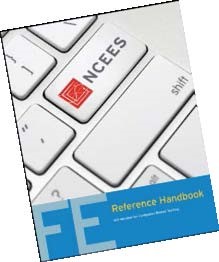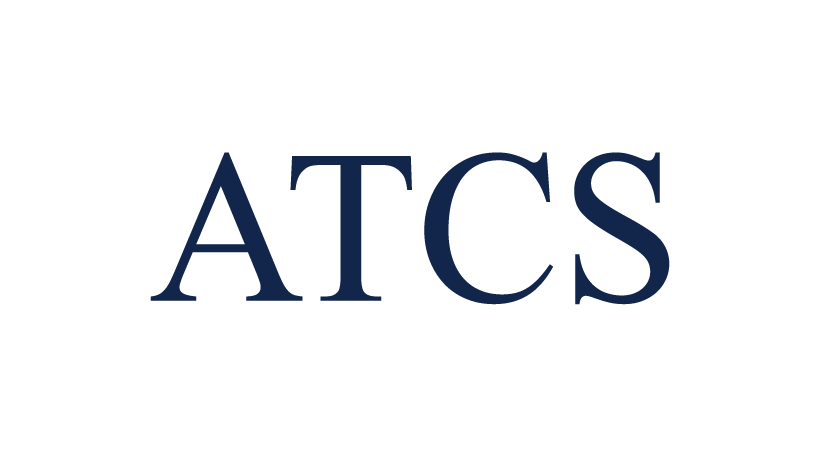Conquering the FE & PE Exams -
"PAT" Stands for Parallel-Axis Theorem
By Ahmet Zeytinci, P.E., F-NSPE


I was an avid reader of science fiction, and back in early eighties I read “X” Stands for Unknown, by Isaac Asimov, a collection of seventeen nonfiction science essays published in a science fiction magazine. The subtitle of this month’s article was inspired by that book and following some of our readers’ requests, I’ve decided to write about the Centroids, Moments of Inertia, and “Parallel Axis Theorem for an Area” which is one of the most important theorems in mechanics.
In the FE and PE exams there will be several questions about finding the centroids and moments of inertia of simple or composite areas. Both topics are listed as the “suggested required topics” at the top of page 266 of the new NCEES-Reference Manual (CBT-Version 9.1). Without getting into complex mathematics or derivations, let’s start with the “centroid of a cross-sectional area.”
In simplest terms, the centroid is a point that defines the geometrical center of an object or area and has to be determined first when solving problems in bending of beams, columns, and finding the deflections of flexural members, to name a few. The centroid of an area can be defined by considering the first moment of area about an axis, Integral (x.dA) and here x is known as the moment arm. On the other hand, the second moment of inertia, which is Integral (x2).dx is referred to as the moment of inertia for an area. Many problems in the FE and PE exams will require you to find the moments of inertia of any given area about any given axis, mostly horizontal centroidal axis.
In the NCEES-Reference Handbook, “Centroids” and “Moment of Inertia” are introduced on page 36, and on page 64, Moment of Inertia and “PAT” is defined. “The moment of inertia of an area about any axis is defined as the moment of inertia of the area about a parallel centroidal axis plus an additional term equal to the area multiplied by the square of the perpendicular distance d from the centroidal axis to the axis in question.” Two PAT formulas are in the handbook after the definition.
Visit the problems/examples for examples and supplemental problems to help demystify these concepts. Also, I strongly remind readers to review the formulas on page 65 of the Reference Handbook before taking the exam. When you need a formula for an area, centroid, moment of inertia, radius of gyration and product of inertia for simple shapes, go directly to PAGE 65 of the Handbook without wasting time. Rectangles, triangles, circles, circular sectors are on pages 65-67.
As always, I shall close with a final thought: during the FE or PE exams, the more time you spend on a difficult question, the more time you risk second guessing yourself. Trust your intuition. You have worked hard, don’t doubt yourself! Come back to that question later when you might have a clearer mind.
Until next time,
Dr. Z.
Conquering the FE & PE Exams
By Ahmet Zeytinci, P.E., F-NSPE


I would like to start with thanking the readers of Dr. Z’s Corner from the metro area, around the nation and the globe for their good wishes, kind words, and constructive comments. As we’ve indicated earlier, the whole purpose of this exercise is to spark interest in engineering and along the way help the readers to prepare for the FE and PE exams and hopefully enjoy the experience. This month, I would like to answer some important questions that we’ve received from our readers.
Click HERE for this month’s sample problems and solutions.
How do I become a registered Professional Engineer?
Let us start with education. The students may start this journey in their senior year and take the (FE/EIT) exam even before they graduate. The exact rules may vary from state to state. Taking the (FE/EIT) exam is the most important step in the process followed by gaining the professional experience (number of years varies from state to state) and of course, passing the (PE) exam. For detailed information regard-ing the FE and PE exams the readers should refer to the official website of the National Council of Examiners for Engineering and Surveying (NCEES) at http://ncees.org.
Who prepares the questions for the FE and PE exams?
The Committee on Examination for Professional Engineers of NCEES prepares the questions. The committee is composed of P.E.s who are experts from industry, consulting firms, education, and volunteers. Periodic surveys are conducted by NCEES to ensure the FE exam specifications and contents reflect what is being taught in schools. The new format of the FE exam started in January 2014 following a survey done in 2012–2013.
What is the new exam format and reference materials?
The new FE exam is a computer-based test (CBT). It is closed book exam with an electronic reference handbook (FE Reference Handbook, New 9.1 Version for Computer-Based Testing) is the only resource material allowed during the exam. Examinees will have 6 hours to complete the exam, which contains 110 multiple-choice questions. The exam will be divided into two sections with a tutorial, a 25-minute break in the middle.
What are the dates of FE Exams?
Starting with the new computer-based test (CBT), the FE exam will be administered during four testing periods throughout the year: January-February, April-May, July-August, and October-November.
When is the registration period?
Registration will be open year-round. You may register and schedule the appointment through your “My NCEES” account on the NCEES website. The registration process starts when you select your exam location. Once the location is entered, the applicant will be presented with a list of exam dates for that particular location. To find the best time, you can always browse through the available dates at another testing centers approved by NCEES.
What kind of units is used in the test?
The FE exam uses both the metric system of units (SI) and the U.S. Customary system (USCS). In the USCS system of units, both force and mass are called pounds. Therefore, one must distinguish the pound-force (lbf) from the pound-mass (lbm).
What is the best strategy to conquer the exam?
The FE exam is computer-based and the FE Reference Handbook is the only resource material you may use during the exam. You won’t be allowed to bring your personal copy of the Handbook into the exam room. The computer-based exam will include a PDF version of the Reference Handbook for your use. Reviewing the Reference Handbook before the exam is one of the best strategies to conquer the test. Throughout your preparation, you must become familiar with the charts, formulas, tables, and all other reference information provided. For example, if you need the section properties of W 12 x 50, you may immediately flip to Page 155 of the Handbook in a couple of seconds or waste several crucial minutes searching for that information. In the FE exam, timing is everything and that is why you must have a time plan and a wristwatch.
Until next time,
Dr. Z










